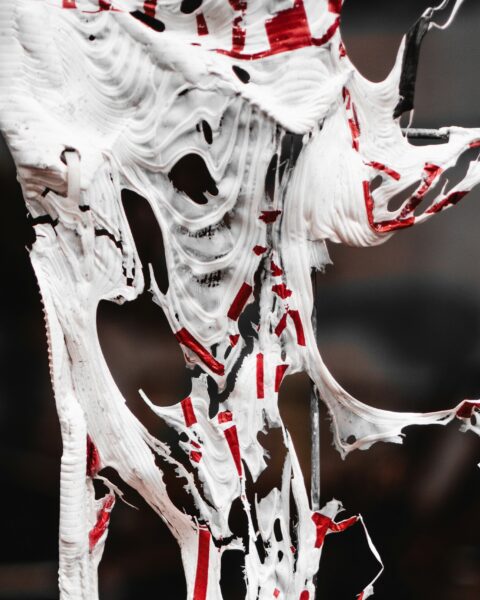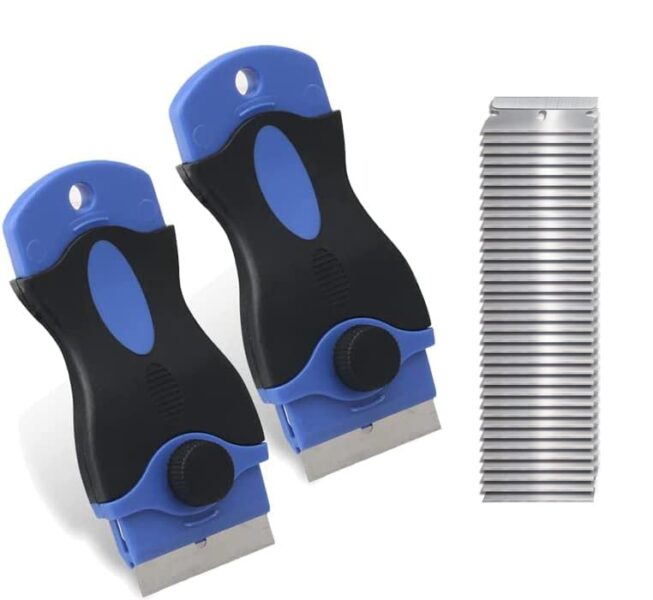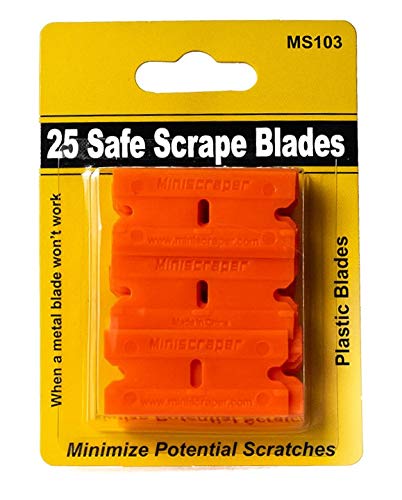Burnt plastic on your stove is more than just an eyesore—it can release harmful fumes and be surprisingly tricky to clean. The good news is you don’t need a chemistry degree or specialized tools to fix the problem. With the right approach, you can clean up the mess and restore your stove to its shiny, plastic-free state. Here’s how.

Before you touch that plastic, make sure your stove is cold. Working with melted, still-soft plastic can lead to nasty smears and potential burns. Speed up the hardening process by placing ice packs or a bag of frozen veggies directly on the plastic. The colder the plastic gets, the more brittle it becomes, making it easier to chip away.
Once the plastic has hardened, grab a scraper designed for delicate surfaces like glass or ceramic stovetops. A plastic spatula, an old credit card, or a razor scraper will do the job without leaving gouges. Work slowly, starting from the edges, and gently lift the plastic away. If you’re working with a non-glass surface, handle the scraper with extra care to avoid accidental damage.

Sometimes, scraping alone won’t get rid of all the residue. These three methods can help tackle the stubborn leftovers:
If your stove has a glass surface, you might be tempted to reach for harsher cleaners. Instead, try these safe, effective options:
| Method | How It Works | Best For |
|---|---|---|
| Ice Method | Hardens plastic for easier scraping | Large, visible plastic spills |
| Mr. Clean Magic Eraser | Gently buffs away residue | Light, sticky residue |
| Citrus-Based Cleaners | Dissolves plastic bits with natural solvents | Skittish about harsh chemicals |
If plastic has melted onto a metal burner, the process is a bit different. Heat the burner on low to soften the plastic, then use a wooden spatula to scrape it off. Be sure to ventilate the area—plastic fumes aren’t something you want lingering in your kitchen. Once the stovetop has cooled, wipe it down thoroughly with a damp cloth and dish soap.
The smell of burnt plastic might linger faintly the first time you use your stove after cleanup, but this is temporary. If it bothers you, air out your kitchen by opening windows or running a fan. For future prevention, follow these tips:
Patience is key—it might take a few attempts to fully remove burnt plastic, but with these methods, you’ll get there without damaging your stove. Have a favorite cleaning hack or want to share your own plastic mishap story? Drop a comment below and let’s trade tips! Meanwhile, you can also check out our recent articles for more home improvement tips and guides.

Effortlessly tackle stubborn messes with the 2PACK Razor Blade Scraper Tool. Equipped with 30 stainless steel blades, this versatile scraper is perfect for safely removing burnt plastic, stickers, tape, paint, and glue from glass stovetops and other surfaces. Its durable construction ensures effective cleaning without damaging the cooktop, making it an essential tool for maintaining a pristine cooking area. Transform your cleaning routine with this reliable and efficient scraper set.

The MINISCRAPER with 25 Plastic Razor Scraper Blades is the perfect tool for tackling tough residue and grime without scratching delicate surfaces. Ideal for removing burnt plastic, stickers, labels, and decals from glass and countertops, this scraper features double-edged blades for efficient cleaning. Lightweight and easy to handle, it ensures a safe and precise scraping experience, making it a must-have for any cleaning toolkit.
And there you have it—your stove is back to its gleaming self, ready for your next culinary masterpiece! If you found these tips helpful, or if you have your own stove-cleaning hacks to share, I’d love to hear from you and see your creative solutions. You can join our community and share your own stories by following us on Pinterest where we pin our latest home maintenance tips, or check out our behind-the-scenes adventures on Instagram. If quick updates and healthy banter are more your style, follow us on X (formerly Twitter). And don’t forget to join our vibrant community on Facebook for more inspiration and ideas. Whether you’re tackling tough spills or just want to chat about home improvement, I'm excited to connect with you!
Create a paste by combining baking soda with a small amount of water. Apply this paste directly onto the melted plastic and let it rest for several minutes. The paste acts to soften and loosen the plastic residue. Use a moist cloth or sponge to gently scrub the area until the plastic is completely removed.
Burning plastic emits hazardous gases, such as dioxins, furans, mercury, and polychlorinated biphenyls (PCBs), which can be harmful to plants, as well as the health of humans and animals. Additionally, burning plastic releases black carbon, or soot, which can exacerbate climate change and worsen air quality.
1. Use a combination of baking soda and vinegar.
2. Sprinkle baking soda over the affected area, then spray it with white vinegar until it starts to fizz. Allow it to sit briefly, then gently scrub the area with a brush, sponge, or nylon scrubber. The burnt plastic should begin to come off easily.
